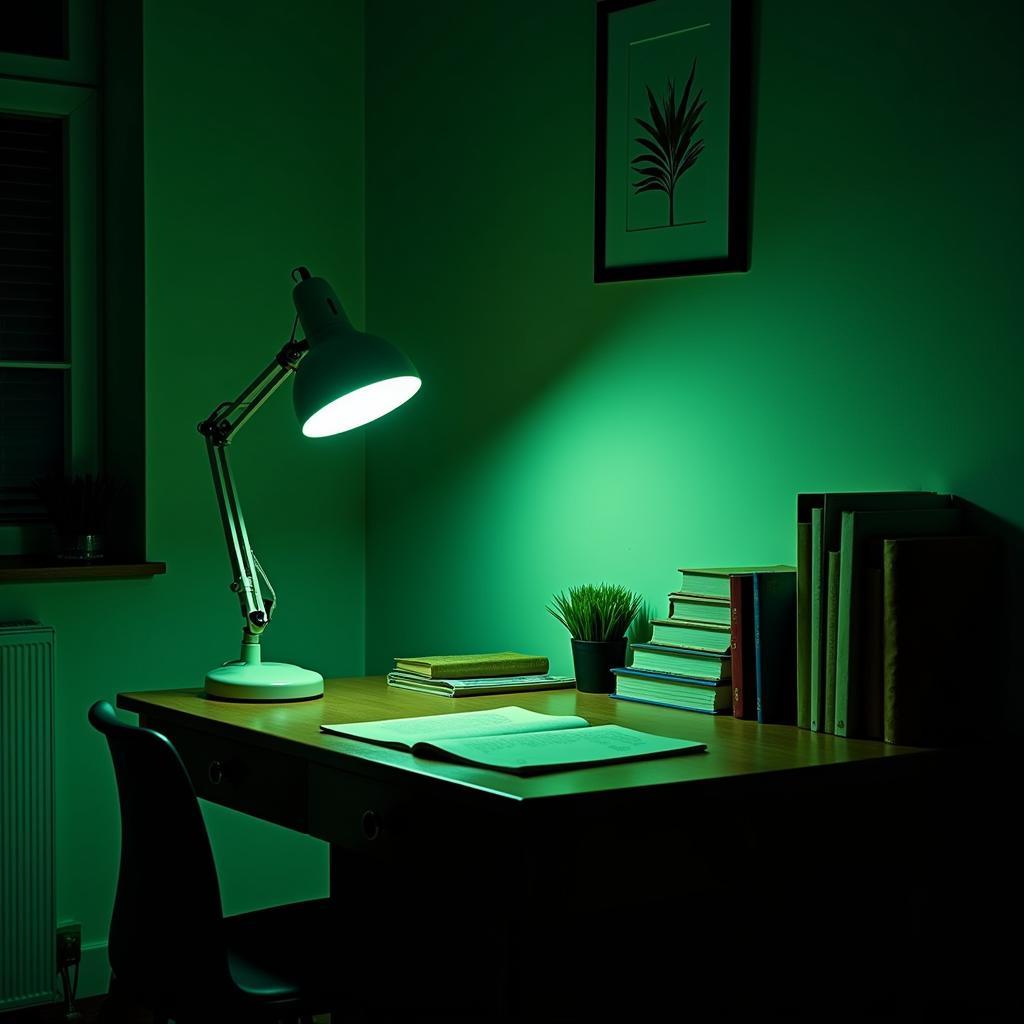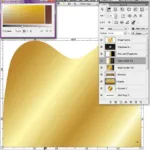The right lighting can significantly impact your study sessions. Choosing the best color lighting for studying can boost focus, reduce eye strain, and improve your overall learning experience. This article explores the optimal lighting choices for your study space, helping you create an environment conducive to concentration and productivity.
Understanding the Impact of Lighting on Study
Lighting plays a crucial role in setting the mood and influencing our ability to concentrate. Poor lighting can lead to eye fatigue, headaches, and decreased focus, hindering your study efforts. Conversely, the right lighting can create a stimulating and comfortable environment, promoting alertness and enhancing concentration. For example, warm lighting can be relaxing, while cool lighting can be more energizing. Finding the right balance is key to maximizing your study potential. Similar to what color is reading, the right lighting can improve focus and comprehension.
Exploring the Best Lighting Colors for Studying
While personal preferences vary, research suggests certain lighting colors are more beneficial for studying than others. Let’s delve into some of the most effective options:
Blue Light: Enhanced Alertness and Focus
Blue light, often associated with natural daylight, can boost alertness and improve cognitive function. However, excessive exposure to blue light, particularly from electronic devices, can disrupt sleep patterns. Therefore, using blue-toned lighting during daytime study sessions can be beneficial, but it’s best to avoid it in the evenings.
Green Light: Reduced Eye Strain and Calm Focus
Green light is considered one of the most calming and restful colors for the eyes. It can reduce eye strain and promote a sense of calm focus, making it ideal for extended study periods. Green light can also create a more natural and comfortable environment, minimizing distractions. This is especially helpful if you often find yourself struggling with eye fatigue during long hours of studying.
 Green Light Study Space for Reduced Eye Strain
Green Light Study Space for Reduced Eye Strain
White Light: Balanced Illumination for Concentration
White light, especially with a cooler temperature, can mimic natural daylight and enhance concentration. It provides balanced illumination, making it suitable for various study tasks, from reading to problem-solving. Choosing a white light with adjustable brightness can allow you to customize the intensity according to your needs.
Just as with [how to color code your bible](http://colorbox.com.vn/how to color-code-your-bible/), choosing the right color for studying can bring clarity and focus.
Avoiding Distracting Lighting Colors
While certain colors can enhance your study experience, others can be distracting and detrimental to focus. Avoid using overly warm or dim lighting, as it can induce drowsiness. Similarly, overly bright or harsh lighting can be overwhelming and contribute to eye strain.
Red Light: Sleep-Inducing and Not Ideal for Studying
Red light is known to suppress melatonin production, making it unsuitable for studying. While it can be beneficial for nighttime activities like reading before bed, it can hinder concentration during study sessions. Like what color helps you sleep better, red light can be beneficial for sleep but not for studying.
Practical Tips for Optimizing Your Study Lighting
Beyond choosing the right color, several practical tips can further optimize your study lighting:
- Use a Desk Lamp: A dedicated desk lamp provides focused light directly onto your study area, minimizing shadows and reducing eye strain.
- Adjust Brightness: Choose a lamp with adjustable brightness to customize the light intensity based on the time of day and your specific needs.
- Consider Natural Light: Position your study area near a window to take advantage of natural daylight whenever possible.
- Minimize Glare: Avoid positioning your desk lamp or computer screen in a way that creates glare on your study materials.
- Take Breaks: Regularly take breaks to rest your eyes and avoid eye fatigue. Similar to understanding what color goes first in chess, understanding the impact of lighting on studying can be strategic for success.
 Optimal Study Environment Setup with Ideal Lighting
Optimal Study Environment Setup with Ideal Lighting
Conclusion
Choosing the best color lighting for studying is crucial for creating a productive and comfortable learning environment. By understanding the impact of different lighting colors and implementing practical tips, you can enhance your focus, reduce eye strain, and optimize your study sessions. Finding the right lighting is an investment in your learning success. What color lighting do you find most beneficial for studying? Let us know! You can also explore our in-depth guide on what color is best for studying for more information.
FAQ
- What is the best color temperature for studying? Cooler white and green lights are generally considered best.
- Should I use a desk lamp or overhead lighting? Both can be beneficial, but a desk lamp offers more focused light.
- Does natural light help with studying? Yes, natural light can boost alertness and improve mood.
- How can I reduce eye strain while studying? Take frequent breaks, adjust your screen brightness, and use proper lighting.
- What colors should I avoid for study lighting? Avoid overly warm or dim lighting, as well as overly bright or harsh lighting. Red light should also be avoided.
- Can blue light be helpful for studying? Yes, in moderation during the day. Avoid it in the evenings.
- Is green light good for studying at night? Yes, green light is less likely to interfere with sleep than blue light.
For further assistance, please contact us at Phone Number: 0373298888, Email: [email protected], or visit our address: 86 Cầu Giấy, Hà Nội. We have a 24/7 customer support team.
